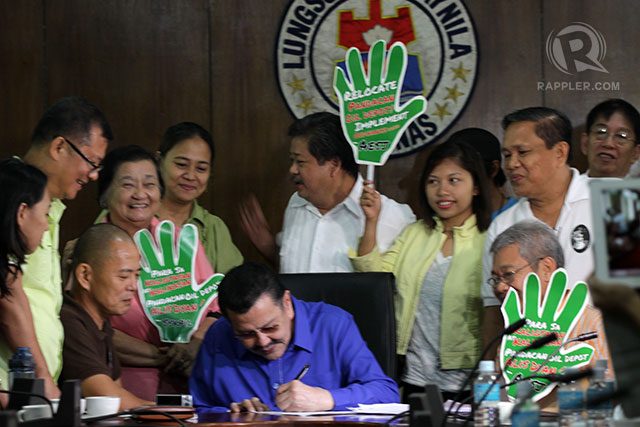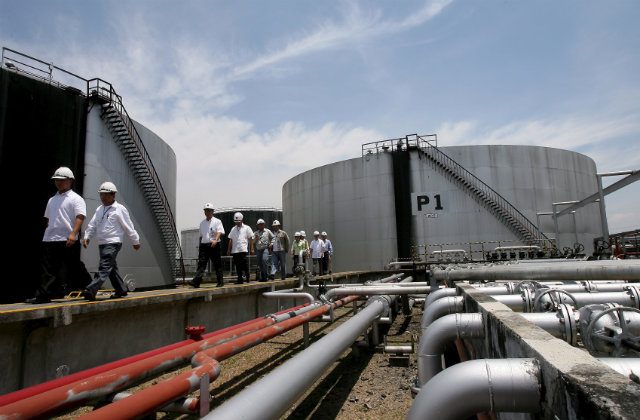SUMMARY
This is AI generated summarization, which may have errors. For context, always refer to the full article.

MANILA, Philippines – Unresolved by 3 administrations for more than a decade, efforts to close down the oil depot of multinational firms in Pandacan, Manila, have finally borne fruit.
On Thursday, April 3, Manila Mayor Joseph Estrada signed letters to Chevron, Petron, and Shell, instructing them to submit their “comprehensive plan and relocation schedule,” as he wants them out by January 31, 2016, or 5 months before his first term as city mayor ends.
“The same will be evaluated by the city government to ascertain if your planned activities will ensure that the facilities that adversely affect the environment and pose a danger to the health and lives of Manila’s residents will be removed as soon as possible,” said Estrada in his letter.
“Urban renewal” was part of Estrada’s 5-point campaign platform during his 2013 bid for the mayoralty. He promised that the city council would help push for the passage of ordinances on education, health, and housing. (READ: Erap blasts Manila decay under Lim)
This is the latest effort to boot oil companies out of Pandacan. From 2001 to 2014, battles have been fought before the Supreme Court and the halls of the Manila city council over the planned closure of the oil depot.
Battles of land reclassification
In 2001, then Mayor Lito Atienza signed City Ordinance 8027 that reclassified the Pandacan oil depot area from an industrial to a commercial area.
A few months later, the local government and the Department of Energy agreed that a scaling down was “the most viable and practicable option.” Atienza issued special business permits for the oil companies. In 2006, approved a new city ordinance that again reclassified the area to a High Density Residential/Mixed Use Zone and a Planned Unit Development/Overlay Zone.

A 7-year phase-out period, which was to end in 2013, was given to the companies. The phase-out did not push through, however, because later in 2007, the Supreme Court (SC) ruled that Atienza should “immediately enforce Ordinance no. 8027.” In 2007, the SC affirmed its earlier decision, and said the newer ordinance did not conflict with Ordinance no. 8027.
When Alfredo Lim took over the mayorship, he approved Ordinance No. 8187 in 2009, reclassifying the area into a heavy industrial zone. A few months later, the SC upheld with finality Ordinance No. 8027 – Pandacan was going to stay a commercial, and not an industrial, area.
But 3 years later, the Manila city council passed Ordinance No. 8283, turning Pandacan back into a high-density commercial/mixed use zone. This is the ordinance whose implementation Estrada is pushing for.
So far, Manila under Estrada has seen a series of dramatic changes in policy – from a controversial bus ban to an even more contentious daytime ban on trucks.
Do you think Estrada will be as firm on the Pandacan oil depot phaseout as he has been with the road policy reforms? Let us know in the comments below. – with a report from Michael Bueza/Rappler.com
Add a comment
How does this make you feel?
There are no comments yet. Add your comment to start the conversation.